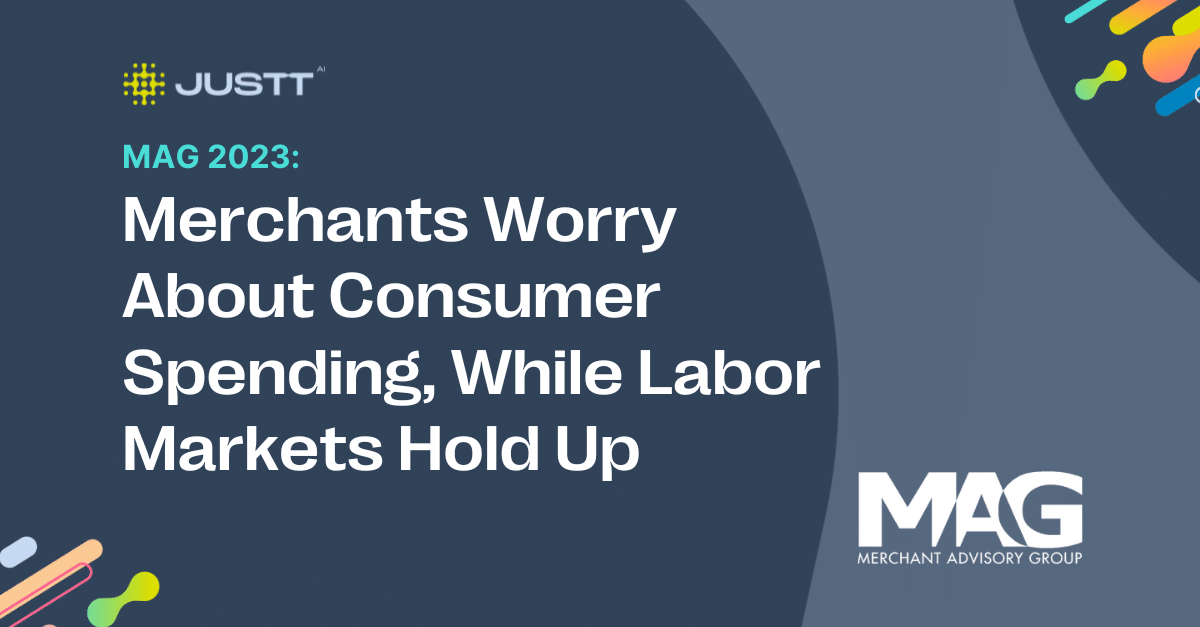Merchants are more worried about consumer spending than is warranted by the figures or the economy. That was the key message conveyed by Mastercard at the Merchant Advisory Group (MAG) 2023 conference in Atlanta on Monday.
“The household balance sheet is perfectly healthy,” said Michelle Meyer, Mastercard’s chief economist for North America, during a Monday morning session at MAG. She explained that while in 2022, consumer spending was powered more by debt and savings spending, in 2023 to date it was labor income that supported growth in consumer spending.
At the same time, 60% of the 100 merchants polled in the audience at the session said they were concerned by weakened consumer spending. This was the greatest concern in the room by far, followed distantly by access to credit and interest rates, which came in at 13%.



